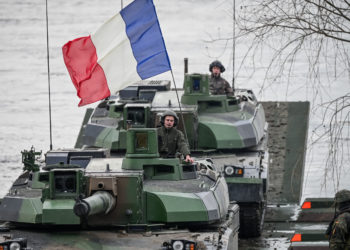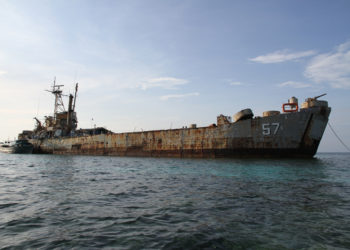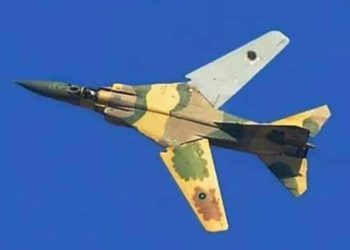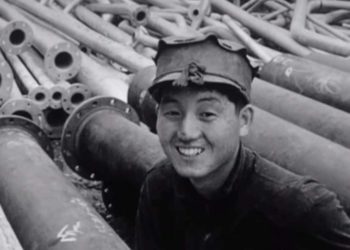The United States Army is in the process of modernizing its forces. There are a few solutions that the Army can afford to consider that would help mitigate risks of failure, while retaining lethality overmatch against adversaries. None of these options would be financially risky, nor would they adversely impact the Army or its Modification table of organization and equipment (MTOE) in a way that would be prohibitive when compared to the current course of action the Army has chosen. In truth, these suggestions take advantage of a small window that exists in which the Army can modernize correctly, and still develop the next generation of combat equipment without mortgaging the future for what appears to be a bridge nit yet built.
1). Modernize the Bradley. The claim that the Bradley vehicle is maxed out is false. The recent A4 Engineering Change Proposal (ECP) restored the power needed to field current and a few future capabilities. The Army could and should modernize the fleet by upgrading to the 30mm cannon that is currently being fielded in the coming years to the Stryker fleet.
This would provide commonality for weapons, ammunition and would give the Bradley equal lethality with the Stryker. It would also give the Army time to steadily test and field both the new 50mm cannon coming online and the yet to be developed Bradley replacement, the Optionally Manned Fighting Vehicle (OMFV). It would also keep the Bradley fleet relevant in terms of lethality until the late 2030 timeframe, as it is currently not possible for our industrial base to produce relevant numbers of the OMFV to equip our Armored Brigades, thus the Bradley will be serving well into the next decade, regardless of when we actually start building its replacement.
Lastly, it is logical because if it was an urgent need to up gun the SBCT fleet, then the same logic applies to the Bradley fleet. It becomes even more important when considering that the OMFV is based upon extremely immature technology and operational concepts, especially when one examines the scope of the experiments and basis of rationale behind the decision.
Finally, upgrading the Bradley fleet now allows for a mitigation option if circumstances with the OMFV falter or slip due to funding issues, as it has a cost associated with it that is near 50 billion dollars, with a likelihood of increase in the future.

2). Networked Munitions. The Army is also fielding a Network Lethality program. This will allow for digital transmissions of targets to adjacent platforms that will allow for quicker engagement times through cueing. With the fielding of network-enabled battlefield sensors, formations will now be able to transmit target data to adjacent units. A capability gap can be identified here. When a unit observes an enemy formation, ground based engagement options are either the employment of indirect fires against targets or friendly units with a line of sight on the enemy itself.
What is needed are ground based munitions which can accept digital targeting data from observers, while out of direct line of sight of the enemy. This would increase formation lethality and allow for a form of cooperative engagement somewhat similar to the US Navy’s Cooperative Engagement Capability. The Army could either adopt a Hellfire Missile or perhaps customize the Israeli LAHAT missile and house it in a Multi Mission Launcher (MML). For argument’s sake, a total of 16 total missiles per platform could be achieved and fielded to meet the requirement.
Further, as an example of the potential operational uses here, one of the MML’s could be added to the MTOE of each platoon found in all of the Army’s Reconnaissance Squadrons, for a total of 96 missiles per Squadron (6 platoons per Sqdn). Operationally, this could be employed via the MML’s staying hidden two kilometres behind the front line of trace and out of enemy direct fire range, where they would receive networked guidance from observers. This networked observation would then be sent to the MML’s firing unit, which then would fire their munitions towards it targets, up to 6 kilometres away from friendly forces.
This capability would allow for each and every Cavalry Troop to have a significant increase of lethal firepower at its disposal, which would help shape the overall fight. Fiscally, it is a lot more feasible than trying to replace reconnaissance specialists with robots and unmanned units, not to mention, far more affordable.

To further illustrate the capability , currently Hellfire missiles are being used by the US Navy, in the surface to surface role against fast moving maritime targets, thus significant data is available for use by the Army to study. The Israeli LAHAT is also a capable weapon that would afford a fantastic pairing between the Army’s desire of DRI overmatch and a weapon system that can capitalize on said DRI capabilities.
In either case, these munitions can serve as a stop gap, affording the Army time to design a munition, specifically tailored for this mission and identified possibility.
To update existing systems to incorporate this operational concept, the Army would likely be required to perform a small amount of modifications to several items of equipment, however, nothing really more complex than the current process of an AH-64 designating for another Apache that is masked behind a terrain feature, firing off salvos of Hellfire missiles.
Additionally, its operational employment could also include aerial observation through manned or unmanned platforms, including tethered drones, as well as a ground based observation, thus this operational concept is flexible and ready now. As an added bonus, the LAHAT, is compatible with our 105mm cannons that equip the MGS and the soon to be fielded MPF platform. Additionally, the munition, with small modifications, could theoretically, be adapted to use by our M256 120mm cannon, found on the Abrams series.
This technology exists in some fashion today and can be achieved at minimal cost and would represent a significant increase in lethality. This would also compliment the purpose of the reconnaissance squadron. It could generate tactical options for a Brigade Commander, as their Cavalry Squadron would have a total of 96 long range, networked missiles directly available to counter enemy threats.
This would allow for a Commander to leverage enablers as needed while reducing the need to augment the Squadron. Considering the costs associated with this being roughly 90k per missile, and roughly 3 million per platform, in total, if the Army elected to adopt this solution, then it could equip its entire Cavalry force with this, all for the cost of a single Battalion of the NGCV, a very favorable tradeoff.










